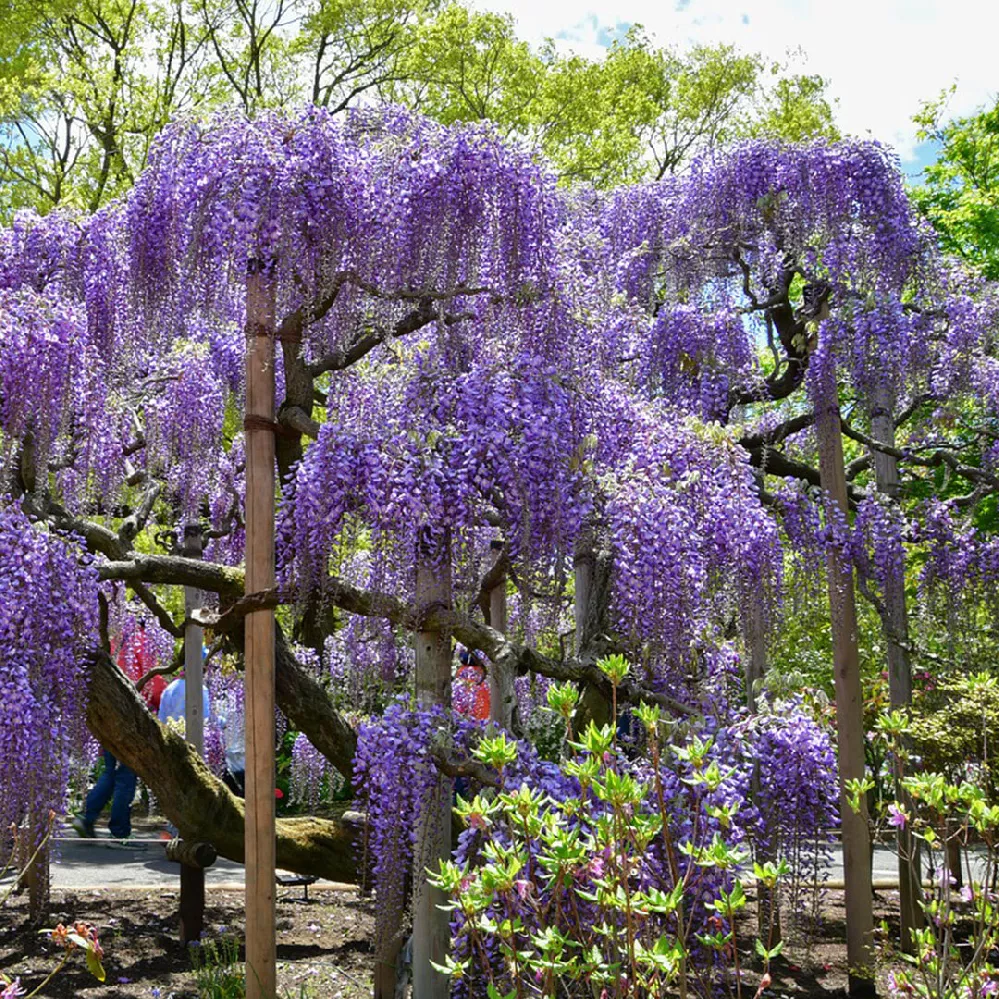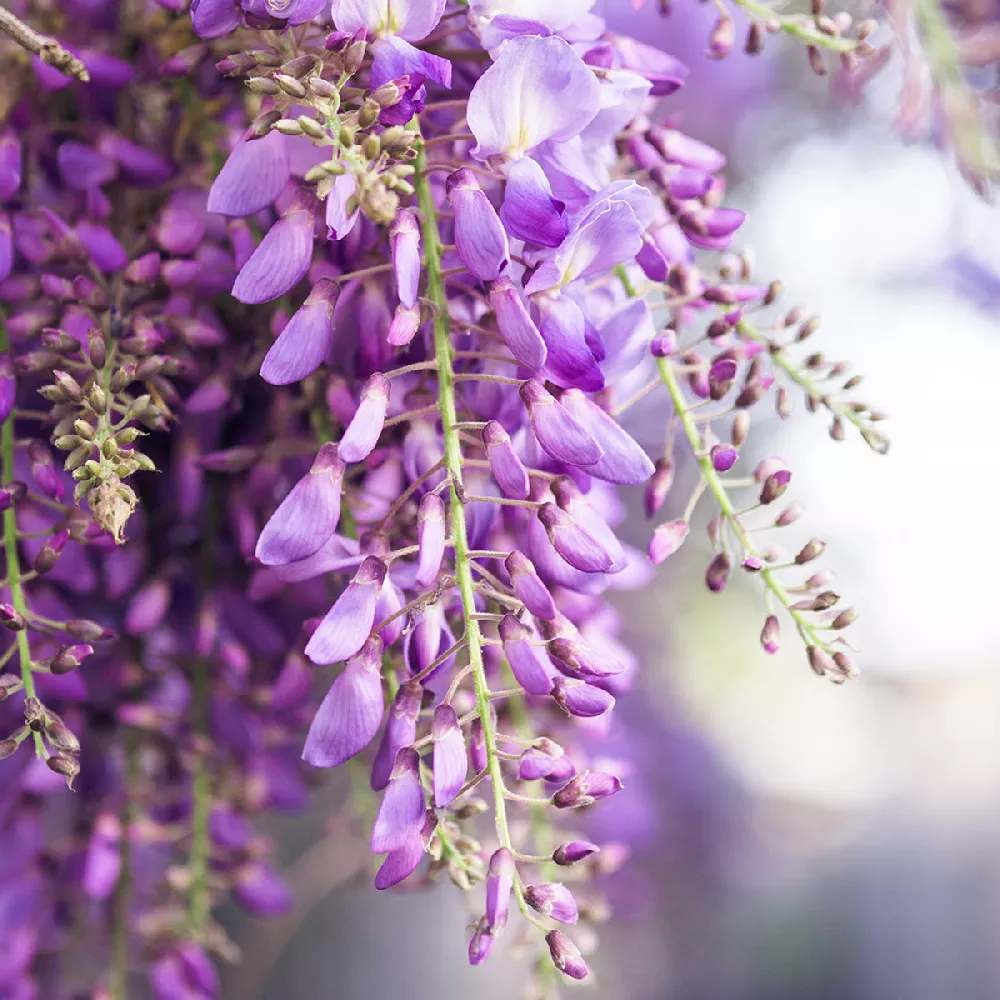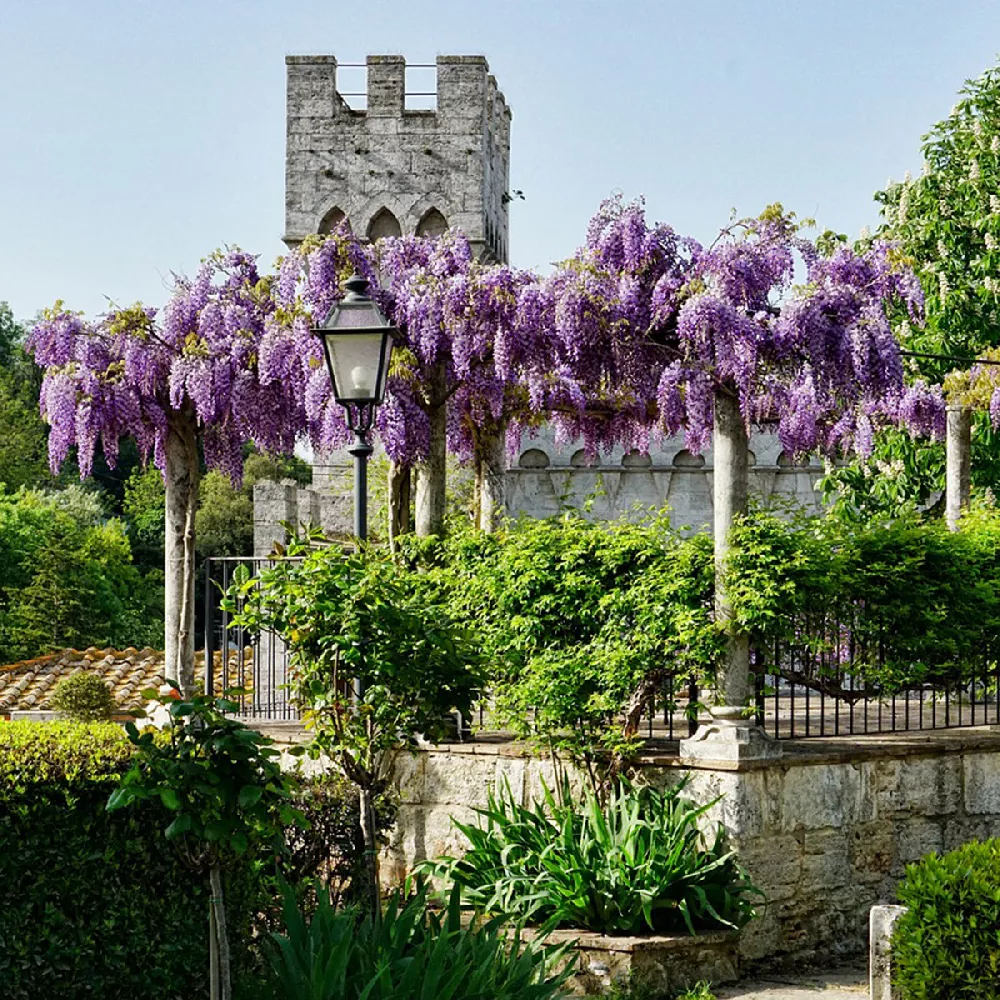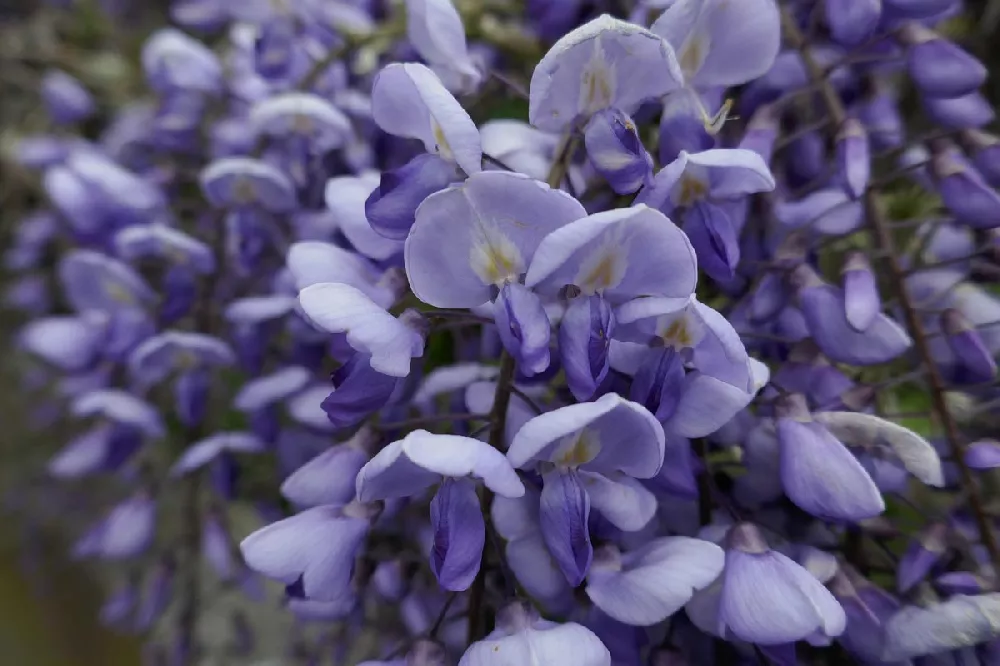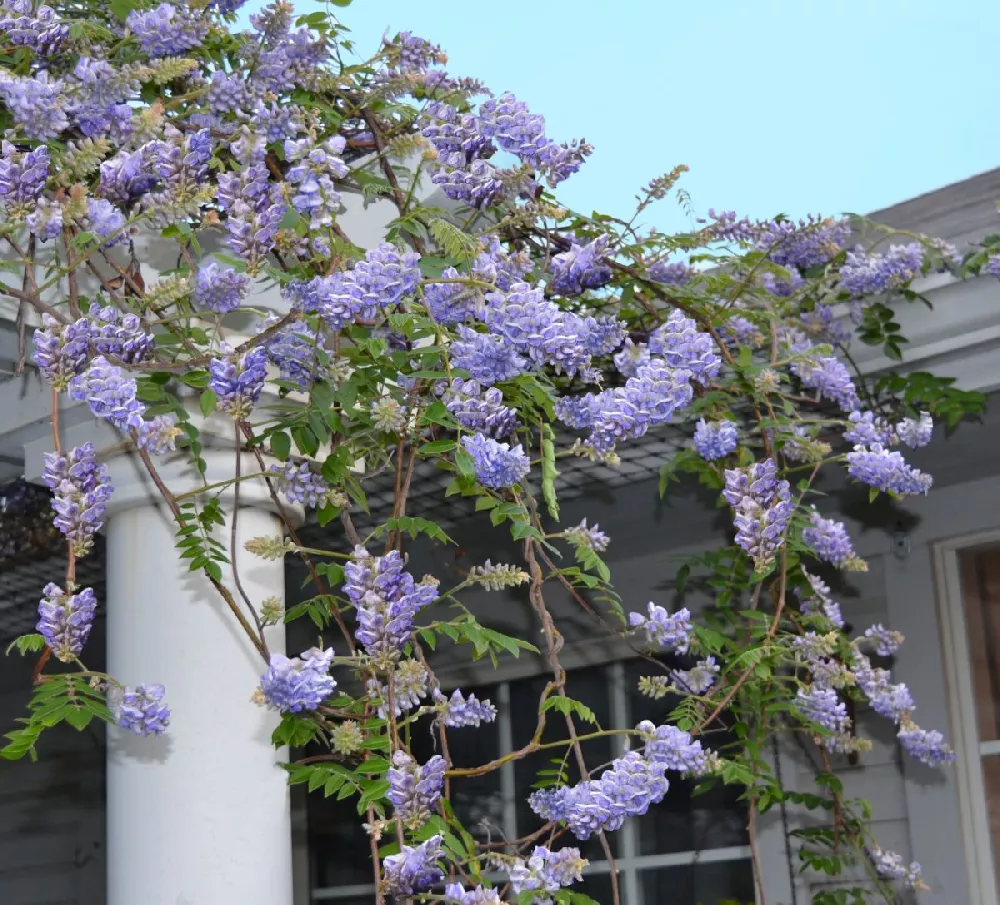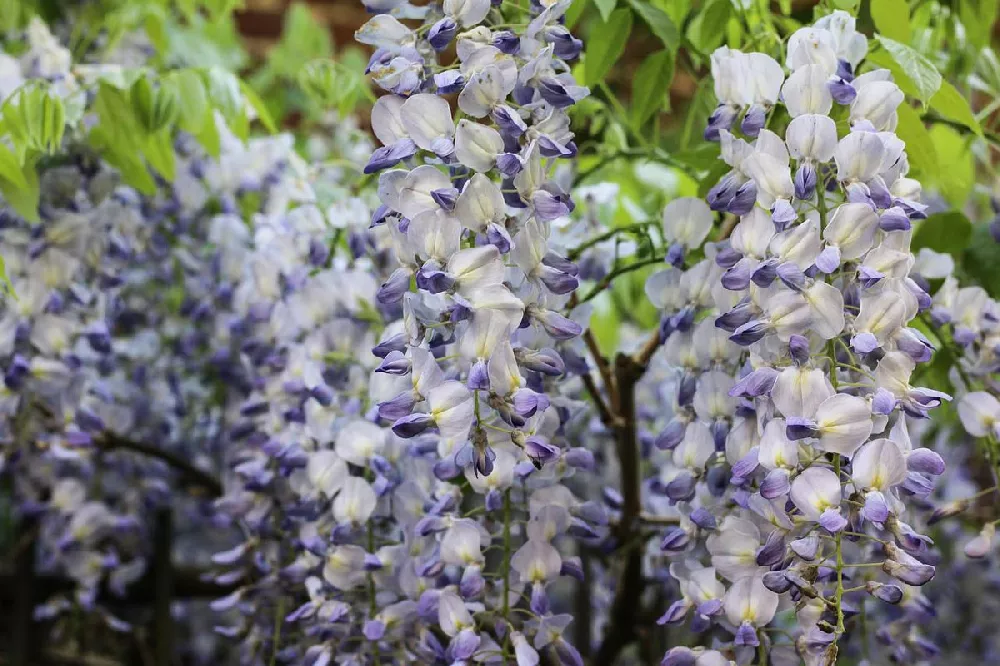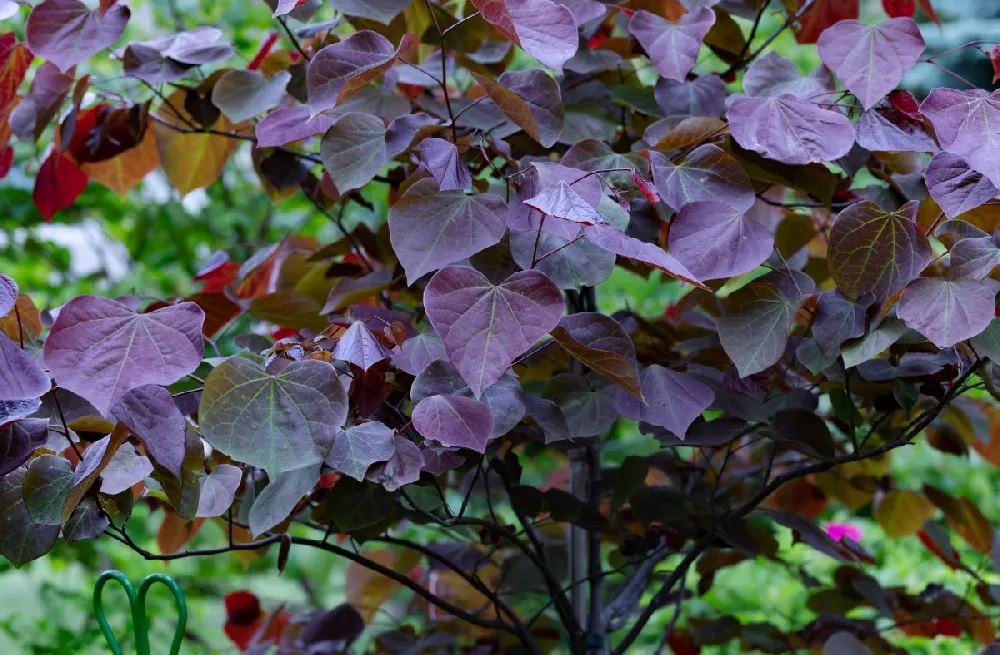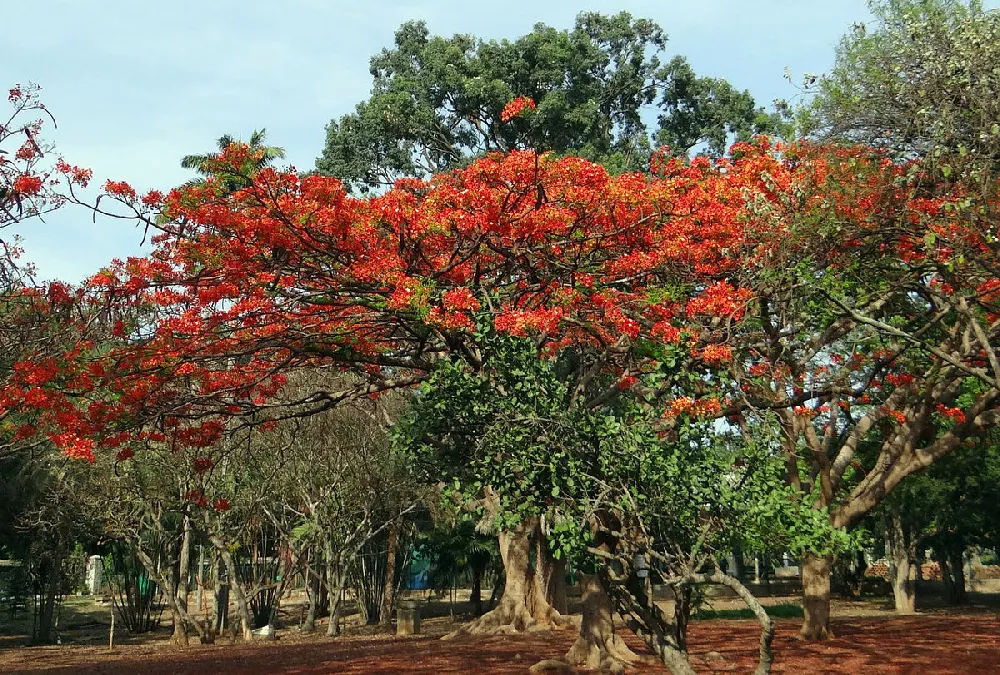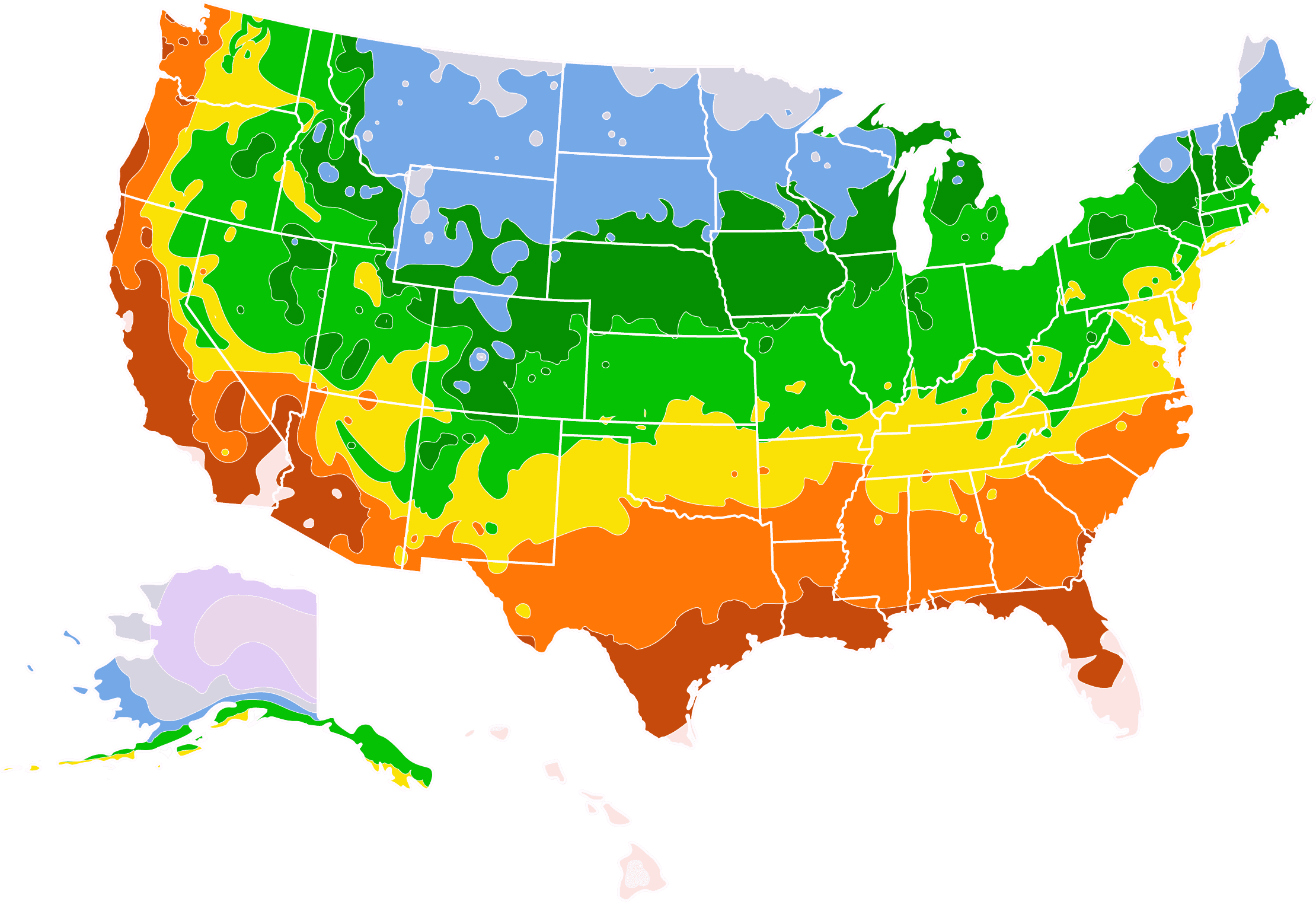Wisteria Trees for Sale - Buying & Growing Guide
- Ships in 1-2 days
- 1-Year Warranty Eligible
- Pots or accessories are not included unless specified in the product options.
Shipping Details:
Once your order is shipped, you’ll receive an email with a tracking number and estimated delivery date. Most orders ship immediately, but some items are seasonal and may only ship in spring or fall. These products are noted on the website.
Wisteria (Wisteria sinensis), also known as Chinese wisteria, is a flowering species of vine known for its beautiful violet blooms. The deciduous plant is commonly trained into the form of a tree, but it also performs well on trellises. Here are some other facts about wisteria trees:
- Fragrant flowers cover wisteria trees between late April and early May.
- Grows as a climbing vine or as a tree, depending on how you prune it.
- Commonly found in temperate gardens around the world.
Plant Care
Sunlight

Survives in partial shade, but full sunlight makes for the best blooms.
Watering
Survives drought once established. Until then, water twice per week.
Fertilizing

Too much nitrogen can be a detriment. Fertilize once per year with a formula that has a lot of phosphorus.
Planting and Care
Planting instructions
Chinese wisteria trees prefer to be planted in a location that receives full sun. Their flower production will benefit from nutritious and well-draining soil. When you’ve chosen your planting site, dig a hole to the depth of the root ball and twice as wide. Place the tree in the hole, keeping it level and upright. Backfill the hole with soil and tamp down gently. Give the newly-planted tree a generous drink of water and apply more soil if settling occurs.
Watering and nutrients
For the first few weeks after planting, give your Chinese wisteria tree a deep watering twice per week. Once it is established, scale your watering schedule back to once per week. After its first year, wisteria trees should grow and thrive on rainfall alone in most climates. Wisteria is a prolific grower, which has led many states in the eastern part of the country to label this species as invasive. If planted in particularly bad soil, or if you feel that your wisteria is not growing very quickly, you can add phosphorus-rich fertilizer once per year.
Pollination
Chinese wisteria flowers are early bloomers, showing up between April and May. The flowers are sweet and fragrant, reminding most people of the smell of grapes. Hummingbirds and bees are frequently seen visiting the violet flowers in the spring, spreading the pollen to other wisteria trees in the area. Wisteria’s invasive behavior is due to its stolons which spread vigorously. The flowers and pods are toxic to humans and pets.
Pruning
Chinese wisteria requires regular prunings throughout the year to manage its vine-like, expansive growth. At the very least, wisteria trees should be pruned in the winter to remove the year’s growth and prepare for another productive season of blooms. You can remove up to half of the tree’s branches — just make sure to leave a few buds on each stem. To increase the number of blooms throughout the spring and summer, cut back the flower clusters as they die off. For those looking for a tree form, you’ll need to use your pruning cuts strategically to achieve your desired shape.
Pests and diseases
Boring beetles are a common pest that can cause issues in wisteria trees. The insects live up to their name, as they bore holes in the tree that then become prone to rot and diseases. Healthy wisteria trees should have a natural resistance to boring beetles, but if an infestation becomes out of hand, remove the infected branches and apply a non-toxic bacterial insecticide. Powdery mildew and leaf spot are fungal diseases that regularly show up on wisterias. To combat these fungi, remove infected branches and prune the tree to promote airflow.
FAQs
How do I get my wisteria to bloom?
While Chinese wisteria trees grow exceptionally fast, they do not flower right away. It is normal for it to take three or more years for the first blooms to appear. After that initial period, many factors will affect your wisteria tree’s ability to bloom, including climate, planting conditions, and age. Purchasing a wisteria from a reputable tree nursery will ensure that the tree has been propagated from a reliably blooming specimen. Applying compost or fertilizer in the spring can promote blooms, as well as planting your tree in full sun and well-draining soil.
How large do Chinese wisteria trees grow?
In their natural habitat, Chinese wisteria vines can grow over 25 feet tall, using the support of other trees and foliage to reach these heights. When grown as a tree, the species can grow over eight feet tall. The tree’s canopy usually takes on a round shape and grows up to 10 feet wide. The drooping clusters of vibrant flowers can grow up to 20 inches long. When grown in ideal conditions, a wisteria tree will typically live to 50 years old.
Is Chinese wisteria invasive?
When allowed to grow wild, Chinese wisteria spreads without opposition, as they have no natural predators in the U.S. The species is a problem in the South, where the climate is similar to the native wisteria range, as well as other parts of the nation. Wisteria will end up damaging and killing the plants that support their vine-like growth, as their foliage and flowers block any sunlight from reaching the hosts. Wisteria is notoriously difficult to eliminate, as any roots left behind will sprout into new plants.
What is the difference between Chinese wisteria and Japanese wisteria?
Chinese wisteria (Wisteria sinensis) and Japanese wisteria (Wisteria floribunda) are closely-related species with a few notable differences. When growing in vine form, the two varieties grow in opposite directions: Chinese wisteria climbs counter-clockwise, and the Japanese variety grows clockwise. The leaves of Chinese wisteria feature up to 13 leaflets, while Japanese wisteria leaves may have up to 19 leaflets. The two species are often crossed to create new variations of wisteria (Wisteria sinensis x floribunda).
Compare Similar Products
Customer Reviews
 Looking good so far.
Looking good so far.Came healthy and seems to be thriving now that it's in the ground.
 Wisteria Tree
Wisteria TreeThe two trees we bought arrived in good condition and have already started growing quickly in just days. We love them.
